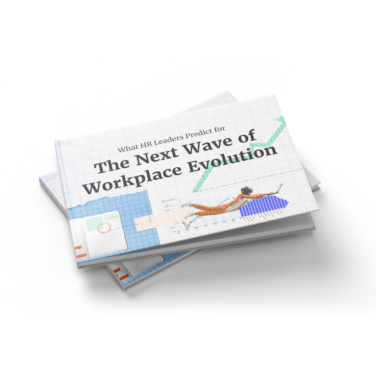Through remote hiring, HR can achieve cost savings in employment and benefit administration, reallocating resources to core business functions. The decision between using a PEO or an EOR service for hiring internationally shapes the foundation of outsourced HR success, affecting everything from legal compliance to employee satisfaction across borders.
Here's how I see it:
- If you want to make your People team more effective without adding headcount, you'll love a professional employer organization (PEO).
- If your issue is managing a global, distributed workforce, an employer of record (EOR) will be the one for you.
Still not sure whether to use an EOR or PEO? Let me help you understand the essentials to drive your remote hiring forward.
PEO vs. EOR: Key Considerations on the Fundamental Differences
I want to make choosing the right software as easy as possible for you, so I created this table covering the key considerations for choosing a system.
| Consideration | PEO (Professional Employer Organization) | EOR (Employer of Record) |
|---|---|---|
| Employment Status | Co-employment model; you and your PEO share responsibilities. | Acts as the full legal employer for tax and employment law purposes. |
| HR Services | Provides comprehensive HR services like payroll, tax filing, and benefits admin. | Similar HR functions as PEO but also acts as the legal employer. |
| Legal Liability | Shares legal responsibilities with your company. | Assumes full legal liability for employees. |
| Insurance | Require you to pay for employee insurance. | Pays for employee insurance. |
| Employee Minimum | Typically require at least 5-10 employees. | No minimum employee requirement. |
| Business Registration | Require you to register in every state/province an employee is hired in. | Does not require you to register in different geographies. |
| Flexibility | More flexibility over HR processes and operations; less geographic flexibility. | More flexibility for your business; less over the specifics of your HR operations. |
| Scalability | Very scalable within limited geographies. | Increased overall scalability, particularly in international operations. |
| Target Audience | Small to medium-sized businesses that want to outsource HR services but retain a degree of control over them. | Companies seeking to employ remote, international teams without establishing new legal entities. |
What is a PEO in HR?
A PEO (Professional Employer Organization) is a service that allows businesses to outsource HR functions like payroll, benefits, compliance, and HR management, leveraging the PEO's expertise for operational efficiency and compliance assurance.
When you hire a PEO, you're entering a co-employment relationship; in other words, they're doing work on your behalf and if they make a mistake with labor laws, you're both on the hook.
The most common reason for hiring a PEO is to outsource specific HR tasks to avoid bloating your organization and taking time away from higher-value tasks.
When using a PEO, beware of borders. If you're hiring a global workforce and don't want to register your business in every single country your employees live in, you should look at an EOR instead. I'll explain the differences below.
How much does a PEO cost?
PEOs typically charge based on one of two pricing models. Either:
- Flat Fee Per Employee: A fixed amount charged for each employee, offering predictable costs for budgeting and financial planning.
- Percentage of Employee Compensation: A fee based on a percentage of each employee's total compensation, aligning costs with payroll fluctuations.
The average cost across the best PEOs is a flat fee ranging from $500-1,500 per employee per year or 2-12% of each employee's wages.
Those are some wide ranges but, generally speaking, costs increase as the PEO performs more services for you. If all they're doing is completing payroll, you can expect them to land on the low end of that range; if you're using their A-Z offering, you'll pay more.
I recommend starting with a clear idea of what you want to outsource to the PEO and then comparing specific pricing for that tier of service across your options. Also, consider the composition of your workforce:
- Do you have a high number of low-wage employees? Find a PEO that charges on a percentage basis.
- Conversely, if your workforce consists of a small group of highly paid individuals, the flat fee would be better for you.
Why use a PEO?
Companies choose to use a PEO because it's easy: Save money, grow faster, decrease employee turnover, and outsource repetitive work.
A 2019 study found that businesses using PEOs saved an average of 27.2% on HR costs, while another confirmed that small businesses using PEOs were able to grow faster and lose fewer employees.
PEOs commonly have:
- HR Expertise: Access seasoned professionals to navigate complex HR landscapes, enhancing efficiency and decision-making.
- Employee Benefits Plans: Offer competitive benefits to attract and retain top talent, elevating your employer brand.
- Payroll Processing: Streamline payroll operations for accuracy and timeliness, reducing administrative burdens.
- Payroll Taxes Management: Ensure compliance with tax obligations, mitigating risks of penalties and errors.
- Workers' Compensation: Secure coverage to protect employees and manage liabilities, fostering a safe work environment.
- Benefits Administration: Simplify the management of employee benefits, improving satisfaction and engagement.
- HR Guidance: Receive strategic advice on HR matters to support growth and adapt to regulatory changes.
- Compliance Support: Stay ahead of federal and state employment laws, safeguarding your business from legal challenges.
Chances are good that you'll benefit from using PEO services. Learn why businesses are turning to outsourcing HR solutions and how it could be the right move for yours
What businesses benefit from using a PEO?
PEOs are best for small to medium-sized businesses that want to outsource HR services but retain a degree of control over them. These are usually companies that have small (or nonexistent) HR teams and operate in one, or a small number of, geographies.
When you're choosing which PEO to work with, there are a few final things to keep in mind. Namely:
- How do other companies like using them? Look at reviews, read testimonials, and request references from previous customers.
- What responsibilities do they take on, exactly? If they "handle" a certain process, determine if that means 100% of the process or if you still have a role to play.
- What other benefits do they provide? Some PEO companies offer platform and specialist access or professional development portals; figure out what you're getting from them.
- What is the bottom line? Additional bells and whistles are great but ROI is what really matters. How much will you save on labor vs. the total PEO cost?
The odds of you saving money and time by using a PEO are high; however, do your research, be clear on what you actually need, and don't get swept up by all the extra features.
Find the option that offers what you're looking for, reliably, at a good price.
What is an EOR?
An employer of record is an entity that legally employs workers on behalf of your business, taking full responsibility for payroll, taxes, benefits, and compliance. If you want nothing to do with employment contracts (and the details that come with them), an EOR is a great option for you.
Companies also use EORs when they:
- Want to hire talent from a country where they don't have a local entity (legally).
- Don't have a dedicated HR department but are still too small to use a PEO.
- Have common fluctuations in their business needs and labor demands.
It seems really simple and, for the most part, it is. However, there are risks associated with using an EOR, which chiefly result from another entity taking operations on for you. If they make a mistake, you pay for it.
How much does an EOR cost?
As you probably guessed, there are different pricing models and ranges for EOR services, too. EORs use the same pricing models as PEOs, charging either:
- Flat Fee Per Employee: This model charges a fixed fee for each employee under the EOR's management, providing clarity and predictability in costs, ideal for budgeting purposes.
- Markup on Employee Salary: Unlike a percentage of total compensation, this model applies a markup to the employee's salary, creating a pricing structure that scales with salary levels, suitable for businesses looking for a direct correlation between employee cost and EOR fees.
The average cost across top EORs is either a flat fee ranging from $2,400-7,200 per employee per year or a variable cost of 10-15% of each employee's total wages.
It's also worth considering, depending on the services you're in the market for, the pricing of an EOR vs staffing agencies as well.
There are also a few other fees you could encounter when going with an EOR, such as:
- Setup Fees: Initial charges to onboard with the EOR, covering administrative costs.
- Termination Fees: Costs associated with ending the EOR agreement, depending on contract terms.
- Customization Fees: Additional charges for tailored services beyond standard offerings.
- Transaction Fees: Fees for specific transactions, like international wire transfers.
- Renewal Fees: Applicable for renewing the contract with the EOR, ensuring continued service.
These fees may seem steep but, when you consider how much it costs to do everything in-house, you'll see why it's often a better financial decision to go with an EOR.
Why use an EOR?
A company should use an EOR to effortlessly expand its workforce globally, ensuring compliance with local laws and reducing the administrative burden of international employment. There's a giant global pool of talent available and finding a great EOR is your key to accessing those people at preferred rates.
Other benefits of using an EOR
- Simplify your operations. Focus on the things that matter, not foreign labor laws, administration, and paperwork.
- Rightsize your workforce. In the busy season, you can scale your team and get more full-time help; when business drops off, you can correct quickly.
- Reduce compliance concerns. Let your EOR partner, and its experts, read through the fine print.
- Keep your core team lean. Eliminate extraneous HR needs, managerial headaches, and slow communication timelines by outsourcing functions that aren't business-critical.
You may also find a lot of value in connecting with and learning from your employees from different countries. Who knows, a few conversations could turn into new markets in the future!
What businesses would benefit from using an EOR?
Businesses looking to expand into new international markets or hire remote teams globally without establishing a local legal entity would benefit most from using an EOR. An EOR simplifies the legal and administrative complexities associated with global employment.
Some examples of business that might consider using an EOR:
- Tech Startups: Fast-growing companies looking to tap into global talent pools for specialized skills.
- Small and Medium Enterprises (SMEs): Businesses with limited HR resources seeking to expand their workforce or enter new markets without the complexity of managing international employment laws.
- Consulting Firms: Organizations that require a flexible workforce to deploy on international projects without the overhead of establishing local entities.
- E-commerce Companies: Online businesses aiming to scale globally and need to employ customer support or logistics personnel in different countries.
Ask yourself the following questions before using an EOR:
- How much does institutional HR knowledge matter to me? By using an EOR, you pay a fee to have the technical aspects of employment handled for you. You don't retain institutional knowledge but you do save time and money.
- How important is a local team? We've seen a ton of arguments around the value of in-person work; figure out how important it is to you.
- How rapidly do I need to scale (up or down)? EORs can make things happen quickly. Like, really quickly. Does that matter to you?
If achieving your company's mission is more important to you than the way it happens, you'll probably want to consider a globalized workforce and an EOR.
How to Decide Between a PEO Partner and an EOR Partner
Choosing the best system doesn't have to be difficult. I've laid out the key questions for you here:
What is the size and growth stage of your business?
PEOs typically have a minimum headcount and are better suited for medium to large businesses with steady, predictable growth.
EORs are flexible enough to suit any business size and respond to rapid changes (as might be expected in small companies and startups).
Do you require assistance with global talent acquisition or managing remote teams in different provinces or countries?
If yes, EOR is the one for you.
EORs can help without requiring you to register your company in all jurisdictions you operate in; PEOs can't.
Are you looking for a long-term HR partnership or more flexibility in employment management?
PEOs are best for long-term HR partnerships and companies with consistent growth.
EORs, on the other hand, offer the flexibility needed for dynamic staffing needs and project-based work.
How do you plan to manage legal liabilities and insurance for your employees?
PEOs involve shared legal and insurance responsibilities, fitting co-employment arrangements.
EORs take on the full legal employer status, simplifying your liability management.

What works better for international employees: a PEO or an EOR?
For hiring international employees, an EOR generally works better as it allows businesses to legally employ staff in countries where they do not have a registered entity, ensuring compliance with local employment laws and regulations.
When it comes to employing international staff, an Employer of Record (EOR) often provides a more suitable solution than a Professional Employer Organization (PEO) for several reasons:
- Legal Compliance: An EOR makes sure you adhere to local labor laws and regulations, which can be very different and confusing from country to country.
- Hassle-Free Hiring: Companies can hire employees in new markets without establishing a legal presence, making the process a lot less complicated.
- Payroll and Tax Administration: EORs handle payroll, tax withholdings, and filings in the employee's country, reducing administrative tasks.
- Benefits Administration: They manage and provide locally compliant benefits, which can be crucial for attracting talent.
- Risk Mitigation: By taking on the role of the legal employer, EORs mitigate risks associated with non-compliance.
Example: EOR Solutions Enable Quick Access to Global Talent Pools
Say you have a U.S.-based tech startup that wants to hire software developers in Germany but doesn't have a legal entity there. By partnering with an EOR, the startup can legally employ German developers, ensuring compliance with German employment laws and regulations, without the need to establish a German subsidiary. This approach not only speeds up the hiring process but also reduces the startup's legal and financial risks. Easy.
When to Use a PEO or EOR
If you're in an established business, expecting steady growth, don't expect sudden geographic expansion, and are looking for a long-term HR partnership, a PEO is going to be your best option.
If your business has more complexity due to international borders or fluctuating labor requirements, an EOR is going to be the right choice for you.
Or, if you're simply finding that you're outgrowing your PEO, it may be time to upgrade. EORs are like PEOs' big brother; they do everything that a PEO can do and more, offering more services and a fully hands-off experience... for a higher price.
Want to find out what other people are choosing? Join the conversation in the People Managing People Community, a supportive community of HR and business leaders passionate about sharing the top tips for making an impact in your organization and your career.


